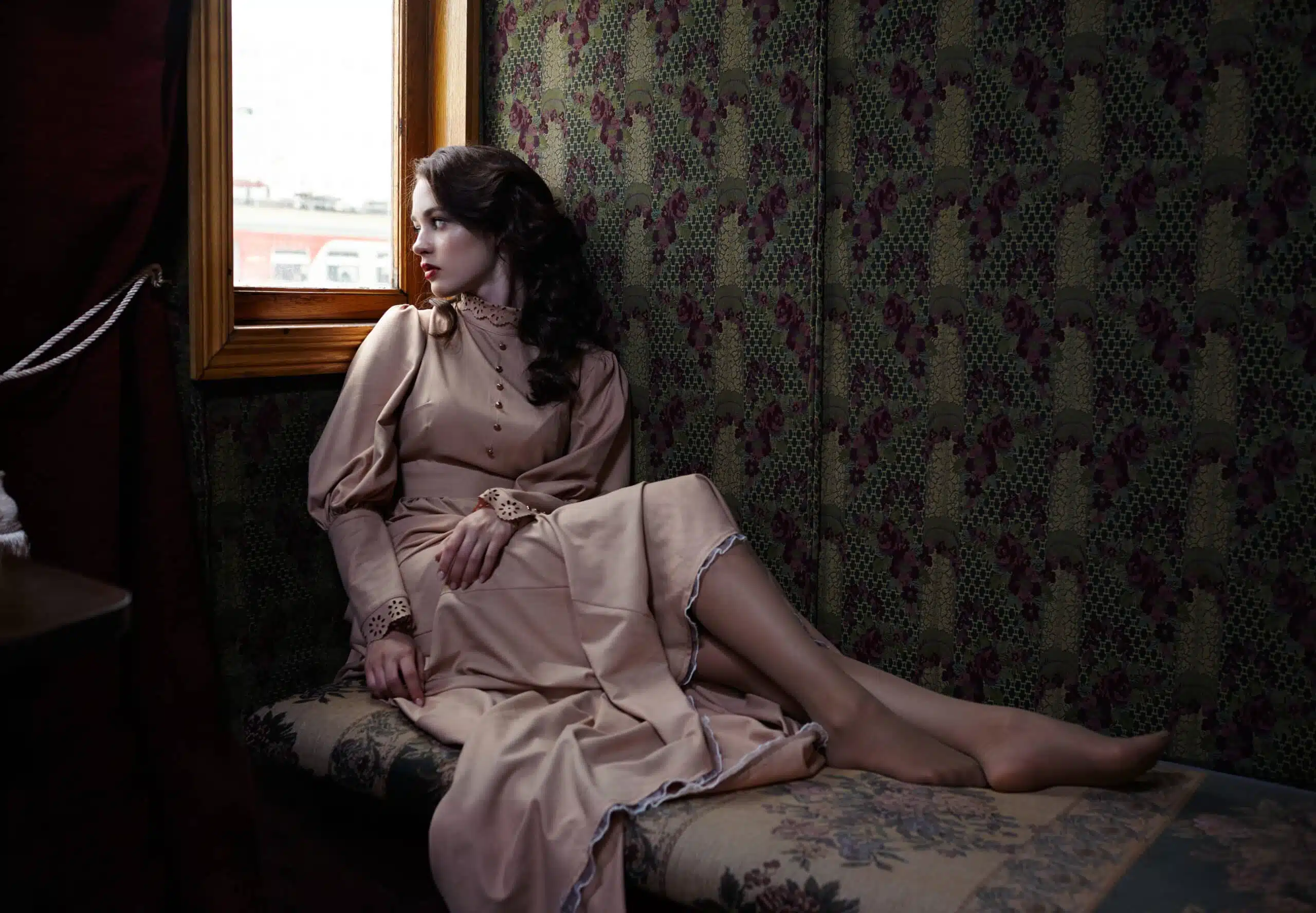Here’s what the Trenta-Sei poetry form is:
The trenta-sei is a relatively young poem form, coming from 20th-century poet John Ciardi.
The form consists of six heroic sestets (verses featuring both a Sicilian quatrain and a heroic couplet).
It also utilizes cascading refrains that are all established in the first verse. This form is unusually complex for its region and era.
So if you want to learn all about the Trenta-Sei poetry type, then you’ve come to the right place.
Let’s dive into it!
- McWhirtle Poetry Form: Find Fun from the Mundane
- Confessional Poetry Form: Speak Heart’s Truth
- Slam Poetry Form: Speak Bold Beats
- Vocabularycleft Poetry Form: Be a Jumble Genius
- Terzanelle Poetry Form: Spin Hopes in Notes
- Mistress Bradstreet Stanza Poetry Form
- Bop Poetry Form: Untie Knots of Life’s Trials

Forms of Poetry: Trenta-Sei

The trenta-sei is a relatively complex 36-line poem with a very specific rhyme structure and refrains.
It’s an uncommon example of a complicated modern form, having been created in the 20th century by John Ciardi, a poet mostly known for his translation of The Divine Comedy.
The name trenta-sei is literally Italian for “thirty-six.”
Given the length of the poem, the name is about as literal as any poem form’s name has ever been.
Basic Properties of the Trenta-Sei

| Rhyme Structure | Strict, with refrains |
| Meter | Iambic pentameter |
| Origin | John Ciardi (20th century American) |
| Popularity | Uncommon |
| Theme | Varies; often narrative poems |
How Is a Trenta-Sei Structured?

The trenta-sei consists of six sixains (six verses of six lines each), with each one having an internal rhyme scheme of ababcc.
Each of these stanzas is a heroic sestet.
Heroic sestets, as the name would suggest to veteran poets, feature a heroic couplet and iambic pentameter.
The heroic couplet is literally just two lines of iambic pentameter that rhyme with each other, usually used at the end of poem forms (such as in the Shakespearean sonnet).
If you need a refresher on iambic pentameter, just remember that it consists of ten syllables per line, divided up into five metric feet.
These feet consist of an unstressed syllable followed by a stressed syllable.
If you’ll be delving into poetry, especially English poetry, you’ll want to familiarize yourself with this particular meter since it’s enjoyed centuries of popular usage.
Heroic sestets additionally contain a Sicilian quatrain, also characterized by iambic pentameter and a simple rhyme scheme (abab). So while the trenta-sei itself is quite recent, it delves into a very refined understanding of poetry’s history and mechanics.
A unique property of the trenta-sei, shared with the cascade poem, is that the first verse defines all of the refrains that will be used throughout the poem.
Line 2 is the second line of the second stanza, line 3 is the third line of the third, etc.
Putting it all together, the trenta-sei ultimately has a structure of aB1A1B2C1C2 / B1dbdee / A1fafgg / B2hbhii / C1jcjkk / C2lclmm.
While this may look daunting to beginners, all you need to remember is that the capital letters represent refrains while the lowercase letters represent lines that appear nowhere else in the poem.

This ultimately makes the trenta-sei feel a bit like a nesting doll for poetry buffs.
It’s composed of six heroic sestets, comprising a Sicilian quatrain and a heroic couplet, both in the most famous and influential English meter, all while featuring cascading refrains.
Just the undertaking of writing a single trenta-sei will wind up teaching new poets a wealth of information.
The trenta-sei tends to be narratively focused, but it’s probable that this only became the norm due to the length of the form.
Thirty-six lines are quite long by the standards of formal poetry, so there’s more than enough room to fit a complex story with multiple characters if so desired.
Example of a Trenta-Sei

A Trenta-Sei of the Pleasure We Take in the Early Death of Keats by John Ciardi
It is old school custom to pretend to be sad
when we think about the early death of Keats.
The species-truth of the matter is we are glad.
Psilanthropic among exegetes,
I am so moved that when the plate comes by
I almost think to pay the God—but why?
When we think about the early death of Keats
we are glad to be spared the bother of dying ourselves.
His poems are a candy store of bitter-sweets.
We munch whole flights of angels from his shelves
drooling a sticky glut, almost enough
to sicken us. But what delicious stuff!
The species-truth of the matter is we are glad
to have a death to munch on. Truth to tell,
we are also glad to pretend it makes us sad.
When it comes to dying, Keats did it so well
we thrill to the performance. Safely here,
this side of the fallen curtain, we stand and cheer.
Psilanthropic among exegetes,
as once in a miles-high turret spitting flame,
I watched boys flower through orange winding sheets
and shammed a mourning because it put a name
to a death I might have taken—which in a way
made me immortal for another day—
I was so moved that when the plate came by
I had my dollar in hand to give to death
but changed to a penny—enough for the old guy,
and almost enough saved to sweeten my breath
with a toast I will pledge to the Ape of the Divine
in thanks for every death that spares me mine.
I almost thought of paying the God—but why?
Had the boy lived, he might have grown as dull
as Tennyson. Far better, I say, to die
and leave us a formed feeling. O beautiful,
pale, dying poet, fading as soft as rhyme,
the saddest music keeps the sweetest time.
Who better to give us our example than the inventor of the form?
It was John Ciardi himself who first determined the requirements of the trenta-sei, so it should come as no surprise that the example is polished and exact.
Take special note of the rhyme scheme and the placement of the refrains.
While the form looks like an algebra equation when written out in notation, a real-world example of the poem should give you an idea of how exactly the poem works.
Despite having a fairly complex structure that feels more in line with poetry of centuries past, the form ends up being remarkably easy to remember because of how formulaic and precise it is.
Tips for Writing a Trenta-Sei

If you’ve ever written a proper Shakespearean sonnet then you’re already fully equipped to write this form, whether you realize it or not.
Each verse functions almost like a mini-sonnet, featuring the combined rhyme scheme of an English sonnet’s first quatrain and a final couplet.
While iambic pentameter has historically been a bit overused, there is a reason that it remains the most popular meter among poets.
Iambic meter just happens to feel very natural to the way the English language is spoken, allowing for a greater degree of control over what words are used and where, while the punchy stressed endings of each line make them feel definitive.
As for why pentameter is popular instead of tetrameter or hexameter, it chiefly comes down to comfort.
Ten syllables is just enough space to comfortably set up the next end sound of the rhyme scheme without having the current line overstay its welcome.
Tetrameter, four metric feet instead of five, is the second most common rhyme scheme (though I don’t recall ever seeing specifically a trenta-sei in tetrameter).
Make sure you choose a topic that you’re comfortable with expanding on.

Thirty-six lines may not sound like a lot, but it’s quite tricky from a poetic perspective since you need to be able to keep the thoughts going that long while also being able to wrap them up succinctly.
Narrative poems can work particularly well since you can always keep adding events, but do be careful to start winding down your poem’s narrative early enough to come to a cozy stopping point.
As for the rhyme scheme, you’ll find it pretty manageable.
Do make sure the lines of the first verse end in common sounds or suffixes though, since you’ll be seeing those sounds again in subsequent verses due to the refrains.
Working with refrains is a beast unto itself, but generally speaking, you should either go for self-contained lines, so that they work anywhere or lines that you can change the meaning of with proper context.
The latter is much more impressive but is only advisable for experienced poets.
Poet’s Note

This is the first time in recent memory that I’ve seen a poem’s notated form go all the way up to the sound “m.”
That’s a full THIRTEEN different end sounds which are all employed by the poem in its rhyme scheme.
Imagine how many there would be without the refrains! Of course, extendable forms can go on for much more than thirteen end sounds, but it is a large number for a finite form.
Comprehensive Collection of Poetry Forms: Craft Words Into Art

Dare to traverse the entire spectrum of poetic forms, from the commonplace to the extraordinary?
Venture from the quintessential Sonnet to the elusive Mistress Bradstreet stanza, right through to the daunting complexity of Cro Cumaisc Etir Casbairdni Ocus Lethrannaigecht.
For those with a zeal to encounter the full breadth of poetry’s forms, this invitation is yours.
Start exploring the vast universe of poetic ingenuity with our comprehensive array of poetry forms right now!
- McWhirtle Poetry Form: Find Fun from the Mundane
- Confessional Poetry Form: Speak Heart’s Truth
- Slam Poetry Form: Speak Bold Beats
- Vocabularycleft Poetry Form: Be a Jumble Genius
- Terzanelle Poetry Form: Spin Hopes in Notes
- Mistress Bradstreet Stanza Poetry Form
- Bop Poetry Form: Untie Knots of Life’s Trials
